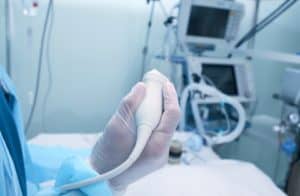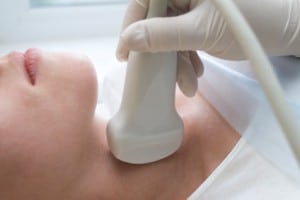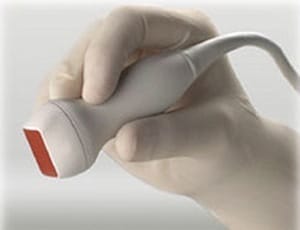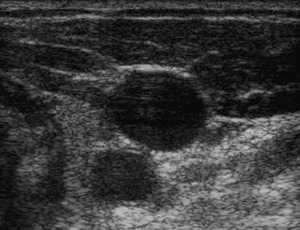Lower extremity catheter positioning in neonates – Full Text

“This single-center study demonstrated that applying the RAP technique to the Neo-ECHOTIP protocol improved the ease and accuracy of lower extremity catheter tip position localization in neonates, thus eliminating the use of radiography” Ostroff et al (2025).
Review of handheld ultrasound for placement of peripheral IV catheters – Full Text

“Ultrasound guided IV catheter (USGIV) access occurs frequently in Emergency Departments (EDs). This task is often performed using large, expensive, cart-based ultrasound systems (CBUS) which are frequently needed for other ED ultrasound functions and can be cumbersome to use and store. Handheld ultrasounds (HHUs) may be able to meet this need, but it is unknown if they function interchangeably with CBUS for USGIV placement” Malik et al (2024).
Empowering nurses with point-of-care ultrasound – Full Text

“Despite its growing integration into clinical practice, PoCUS training has mainly focused on physicians, leaving a gap for trained nurses who demonstrate similar proficiency in conducting scans and interpreting images” Gimenes et al (2024).
Ultrasound-guided CVC placement-related complications in neonates

“No significant difference was detected in the incidence of hematoma or venous thrombosis between the control and ultrasound groups. Other complications, such as pneumothorax, hemothorax, phlebitis, and cardiac tamponade, rarely occurred” Cui et al (2024).
Ultrasound-guided cannulation training in therapeutic apheresis units

“USGC is a useful tool to reduce the need for CVAD. Training across multiple apheresis units is a lengthy procedure, but it can be successfully implemented” Putensen et al (2024).
Point-of-care ultrasound simulation models

“Offering a workshop that uses simulation models in combination with various POCUS devices is useful in establishing this newly learned skill in clinicians, such as measurements of depth, caliper, and direction of a vein with POCUS prior to cannulation providing essential anatomical facts to the operator, which increases the likelihood of first-time success in cannulation” Steinwandel (2024).
Review of POCUS in pediatric ED and PICU

Review of POCUS in pediatric ED and PICU Abstract: Objectives: The aim was to evaluate the current status of point-of-care ultrasound (POCUS), perceptions, education, training, and barriers to using POCUS in pediatric emergency departments (PEDs) and pediatric intensive care units (PICUs) in Turkey. Methods: A descriptive, multicenter, cross-sectional study through an online survey was developed […]
Review of needle and ultrasound probe manipulation skills

“Acquisition of improved dexterity of the probe may occur before improvement in the dexterity with the needle hand for interventional radiology trainees” Weinstein et al (2024).
Ultrasound guided vascular access questionnaire – Full Text

“We assessed current practices regarding the use of USG during catheter insertion, with a focus on identifying breaches of the surgical asepsis required for this invasive procedure” van der Mee-Marquet et al (2023).
Haptic guidance in ultrasound-guided needle-insertion

“These studies show that both types of haptic feedback are promising for helping the user keep the ultrasound probe steady during ultrasound-assisted needle insertion tasks. Survey results indicated that users preferred the pneumatic system over the vibrotactile system” Raitor et al (2023).
Ultrasound in newborn vascular access – Full Text

“The goal of this review was to look into the benefits of using US in invasive catheter insertion procedures, especially in pediatric patients” Brusciano and Lecce (2023).
Barriers to Point-of-Care Ultrasound in Anesthesiology

“A significant increase in desire for POCUS training was seen among anesthesiologists practicing in the Veterans Affairs healthcare system since 2015, and lack of training continues to be a top barrier for POCUS use among anesthesiologists” Remskar et al (2023).
Hand motion analysis associated with ultrasound-guided procedures

“To evaluate the ability of hand motion analysis using conventional and new motion metrics to differentiate between operators of varying levels of experience for central venous access (CVA) and liver biopsy (LB)” Weinstein et al (2023).
Neonatologist-performed ultrasound-guided internal jugular vein cannulation

“We retrieved data of ultrasound-guided neonatal internal jugular vein (IJV) cannulations done between November, 2020 and March, 2021. Of the 33 ultrasound-guided IJV cannulation in neonates, 32 were successful with overall success rate of 97%” Thakur et al (2023).
Virtual clinical ultrasound course – Full Text

“This demonstrates that virtual ultrasound teaching is a viable option for international educational programs in the future” Ward and Palma (2022).
Predicting ultrasound-guided peripheral IV catheter failure

“This study demonstrated that catheter length in vein (>2.75 cm) was associated with improved US PIVC survival highlighting the value of longer catheters in US PIVC survival” Bahl et al (2022).
Point-of-care ultrasound training – Full Text

“POCUS education is present in Italian anaesthesia and critical care residency programs, although with potential for improvement. Significant discrepancies between residents’ and directors’ perspectives were identified” Mongodi et al (2022).
Central venous catheter tip navigation in neonates using ultrasound

“Recent guidelines strongly recommend intra-procedural methods of tip location, to increase the cost-effectiveness of the maneuver and to shorten the time between device placement and utilization” Barone et al (2021).
Bedside ultrasound screening test for CRBSI diagnosis – Full Text

“The aim of the study was to evaluate the role of ultrasound in the diagnosis of infections related to the use of central catheters” de Sio et al (2021).
Article describes the physics of ultrasound

“Images obtained through ultrasound are often subject to artefact; the common artefacts encountered in clinical practice and difficulties imaging certain tissues are explained” Patey and Corcoran (2020).
Comparison between ultrasonography and X-ray when evaluating central venous catheter positioning

“This study evaluates the capacity of ultrasonography as a diagnostic method to confirm the proper positioning of central venous catheter (CVC) when compared to the current gold standard, chest radiography (CR)” Oliveira et al (2020).
Central venous catheterization in cancer patients with severe thrombocytopenia

“The present study investigated if US-guided CVC, in a subset of cancer patients with severe thrombocytopenia, reduced bleeding risk and avoided prophylactic platelet transfusion” Cavanna et al (2020).
Ultrasound-guided arterial cannulation or by pulse palpation

“The aim of this study is to compare the outcomes of US-guided arterial catheterisation with the traditional landmark (LM) technique in critically ill children” Oulego-Erroz et al (2020).
Ultrasound femoral artery catheterisation in newborns

“Ultrasound-guided vascular access is a technique that can increase safety as well as technical and procedural success when performing invasive cardiovascular procedures” Boran et al (2020).
Ultrasound assessment of peripheral blood vessels for chemotherapy administration

“This study was conducted to survey induration incidence and risk factors, and investigation for actual condition of induration” Abe-Do et al (2020).
Competency-based point-of-care ultrasound curriculum

Point-of-care ultrasound is becoming increasingly utilized in centers throughout the country for use in perioperative regional anesthesia procedures, vascular access, diagnosis, and resuscitation” Rashid et al (2019). Abstract: Point-of-care ultrasound is becoming increasingly utilized in centers throughout the country for use in perioperative regional anesthesia procedures, vascular access, diagnosis, and resuscitation. We propose an educational […]
Central venous line placement and ultrasound probe damage

The most damaged areas are located on the short side of the probe (arrows) and on the median point of the long sides” De Cassai and Tonetti (2019). Extract: “The image [Figure 1] shows a linear US probe used for CVC placement in at least three-thousand procedures, mostly by resident anesthesiologists. The most damaged areas […]
Optical skill-assist device for ultrasound-guided vascular access

Ultrasound-guided central venous catheterization may cause lethal mechanical complications intraoperatively. We developed a novel device to prevent such complications. It works as a needle guide to supplement the operator’s skill” Asao et al (2019). Abstract: Ultrasound-guided central venous catheterization may cause lethal mechanical complications intraoperatively. We developed a novel device to prevent such complications. It […]
Agitated saline during ultrasound subclavian central line placement

Agitated saline during central line placement is described for the purpose of identifying the subclavian vein during ultrasound-guided procedures” Araj et al (2019). Abstract: Agitated saline during central line placement is described for the purpose of identifying the subclavian vein during ultrasound-guided procedures. You may also be interested in… [rp4wp] Reference: Araj, F.G., Pena, J. […]
Ultrasound-guided central venous catheter placement through the axillary vein

Placement of a central line catheter in the axillary vein using a novel ultrasound- guided bracket-assisted technique may be a feasible, safe and rapid alternative to the conventional jugular and subclavian approaches” Farina et al (2019). Abstract: BACKGROUND: Central venous catheterization is essential for careful administration of fluids and drugs in cardiac critical care patients. […]

